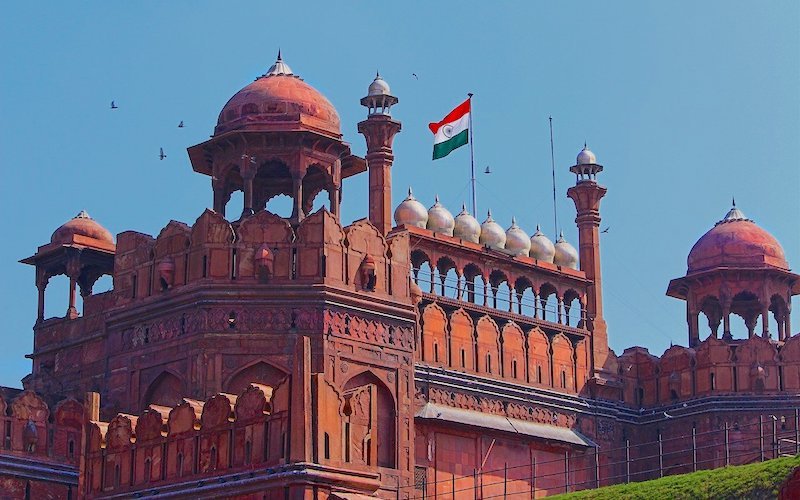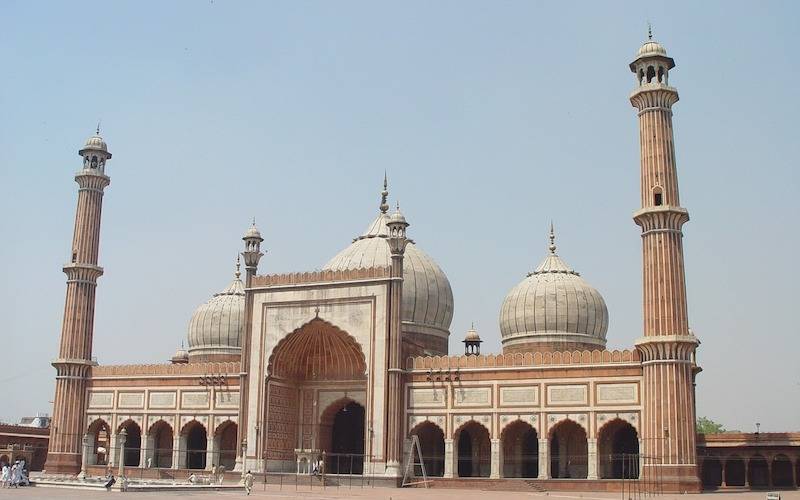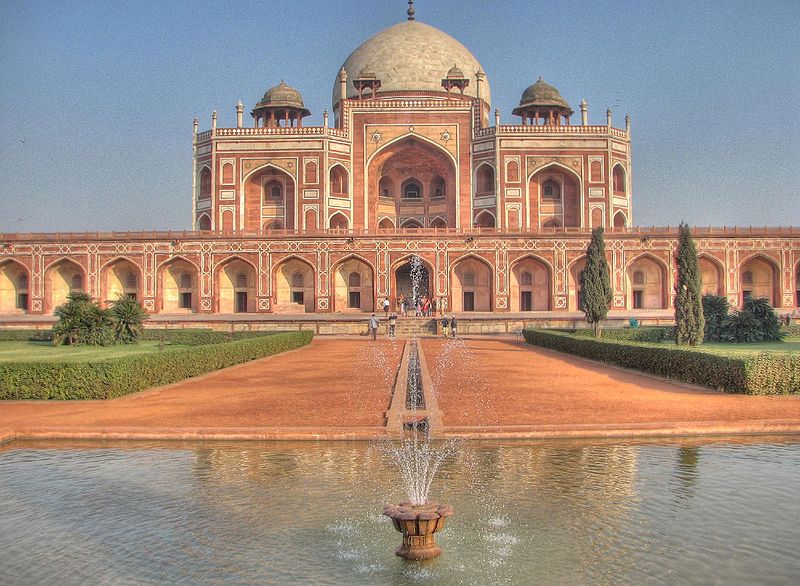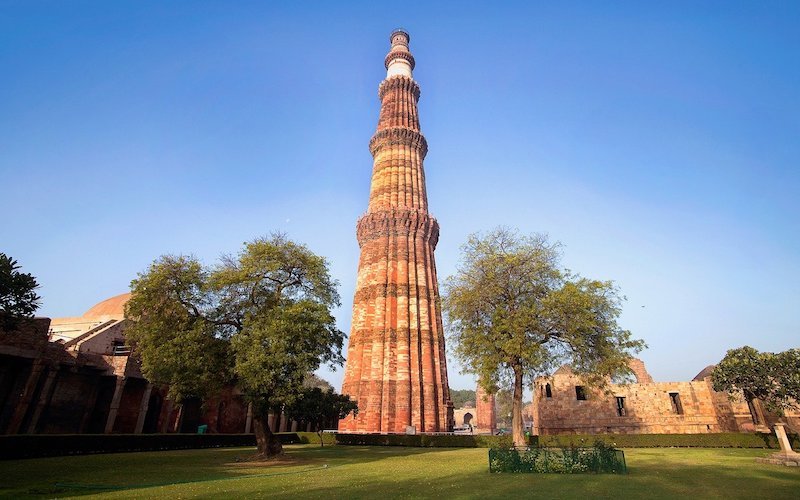Delhi is the hub of the country and it is a buzzing international metropolis which draws people from all across India and the globe. Home to around 15 million people, it’s big and still growing. Yet tucked away deep inside the modern suburbs and developments are some amazing historical places in Delhi – temples, tombs and ruins dating back many centuries.
Introduction to Delhi
The result of this is a city full of fascinating nooks and crannies that you could easily spend weeks, or even a few months, exploring. From the perspective of a tourist, Delhi is divided into two main parts. Old Delhi is called the city of the Mughals and dates back to about the 17th century. It’s the capital’s most frantic quarter, and its most Islamic, a reminder that for more than about 700 years Delhi was a Muslim-ruled city.
The swarming bazaars all have an interesting tale to tell, its best monuments are indisputably the excellent constructions of the Mughals, most particularly the Jama Masjid, India’s main and most imposing mosque and the mighty Red Fort.
To the south, surrounding the modern city centre, is New Delhi, constructed by the British to be the capital of their empire’s key ownership. An expansive city of tree-lined boulevards, New Delhi is also inspiring in its own way. The Rajpath, extending from India Gate to the Presidential Palace, is at least as vast a statement of majestic power as the Red Fort, and it’s among the broad streets of New Delhi that you’ll find the majority of the city’s museums, and its major shopping area, centred around the colonnaded facades of Connaught Place.
When to go to Delhi
February and March or October and November are considered as the ideal time to visit Delhi. During this period, the weather stays pleasant whereas, Delhi enjoys too hot or too cold climate throughout other parts of the year. This mild but warm climate of the city attracts many tourists from many parts of the world. The temperature ranges from 20 to 25 degrees in October. In November, it can fall from 15 to 20 degree. Delhi experience the same temperature to some extent in February and March as it experiences in October and November.
Here are 6 Historical Places in Delhi that you cannot miss…
Historical Places in Delhi
Qutub Minbar (Featured Image Above)
The red sand stone Qutub (or Qutb) Minbar is a masterpiece of Indo- Muslim art from the 13th Century that is the central piece to Delhi’s main archaeological site. The tower itself is 73m high.
Qutube Minbar is part of the Qutub Complex which comprises several other monumental structures including the Quwwat-ul-Islam Mosque, Alai Darwaza, Alai Minar, Ala-ud-din’s Madrasa and Tomb, Iron Pillar, Tomb of Imam Zamin, Sanderson’s Sundial and Major Smith’s Cupola. If you are into archaeology, this is one of the must see historical places in Delhi.
| Nearest Metro Station | Qutab Minar Metro Station |
| Nearest Railway Station | Old Delhi Railway Station |
| Nearest Bus Stand | AKashmiri Gate Bus Stand |
| Nearest Airport | Indira Gandhi International Airport |
Red Fort
The largest of Old Delhi’s monuments is Lal Qila, known in English as the Red Fort because of the red sandstone from which it was built. It was commissioned by Shah Jahan to be his residence and modelled on the fort at Agra. The work started in 1638, and the emperor moved into the fort ten years later. It has all the trappings you’d expect at the centre of Mughal government such as halls of public and private audience, arched and domed marble palaces, , a mosque, plush private apartments and elaborately designed gardens.

Jama Masjid
A wonderful piece of Mughal pomp, the red-and-white Jama Masjid is India’s largest mosque. Its courtyard is large enough to accommodate the prostrated bodies of 25,000 worshippers. It was planned by Shah Jahan and made by a workforce of 5,000 people between 1644 and 1656. Originally called Masjid-i-Jahanuma (mosque commanding a view of the world), this grand structure stands on Bho Jhala, one of Shahjahanabad’s two hills, and looks east to the sprawling Red Fort, and on the boiling streets of Old Delhi. Broad, red-sandstone staircases lead to gateways on the east, north and southern sides, where worshippers and visitors alike∂ must remove their shoes.

Humayun’s tomb
Close to the medieval Muslim centre of Nizamuddin, stands Humayun’s Tomb, Delhi’s first Mughal mausoleum. It was constructed between 1565 to 1572 to house the remains of the second Mughal emperor, Humayun. It was built under the watchful eye of Haji Begum, his senior widow, who camped here for the duration and is now buried alongside her husband. The grounds were later used to inter several prominent Mughals, and served as a refuge for the last emperor, Bahadur Shah II, before his capture by the British in 1857.

Named a UNESCO World Heritage site in 1993, the tomb is nicknamed ‘Dormitory of Mughals’ as it also houses up to 150 family members. The tomb’s solemn, Persian-style grace marks this as one of Delhi’s premium historic sites. Made of red sandstone, decorated with black and white marble, and set on an impressive podium looking to the Yamuna River, it stands in the middle of the official charbagh, or subdivided garden.
India Gate
The India Gate is positioned at the core of New Delhi, India’s capital city. Around 2.3 km from the Rashtrapati Bhavan, it is found on the eastern extremity of the traditional boulevard, Rajpath.
https://www.instagram.com/p/B5vBdMRnSCM/
India Gate is a war memorial dedicated to honour the soldiers of the Undivided Indian Army who died during World War I between 1914 and 1921. War memorials are installations, buildings, statues or other structures dedicated either to hail victory in war, or to pay homage to those who died/were injured in war. Tourists and Delhiites alike crowd the India Gate Lawns surrounding the spot for a leisurely evening, enjoying the light show at the fountains along with snacking on street food. A State War Commemorative to respect all armed forces members murdered after 1947 is being built at the Hexagon of India Gate.
Safdarjang’s Tomb
The two-storeyed tomb of Safdarjang was the very last of India’s great Mughal garden tombs. Built between 1753 and 1774, it dates from the period after Nadir Shah’s sacking of the city, by which time the empire was reduced to a fraction of its previous size and most of the capital’s greater buildings lay in ruins. Safdarjang was the Mughal nawab (governor) of Avadh who briefly became vizier before being overthrown for his Shi’ite beliefs. Emblematic of the decadence and degeneracy that characterized the twilight of the Mughal era, the mausoleum sports an elongated, tapered dome and absurdly ornate interior filled with swirling plasterwork. Facing east, it’s at its most photogenic in the morning.
Historical Places in Delhi – Booking Tours Online
Backpacking India can be overwhelming, especially in Delhi! It might be a good idea to book tours especially if you have a limited amount of time. You can also get more of an insight into the history with a guide. I like to book online with Get Your Guide and Viator.
Historical Places in Delhi – Further Reading
If you enjoyed this article on the Historical places in Delhi, you might also be interested in reading about historical places in Mumbai. You are likely to Delhi to Agra, so remember that there are some amazing places to visit in Agra other than the Taj Mahal!
What to Pack for Visiting Historical places in Delhi
Consider packing conservative clothing and a shawl or headscarf for women if you would like to visit religious places. Some comfortable sandals work well in India as it can be hot so they will let your feet breathe. It can get extremely hot in some parts of India and so sun cream is essential.

It’s a good idea to pack conservative clothing for India. Avoid short skirts and low cut tops or spaghetti straps. Comfortable trousers and linen tops are great. Long skirts and Maxi dresses also work really well and are comfortable with the heat. Comfortable loose cotton or linen trousers are perfect. Don’t forget your sunglasses, and pack your prescription sunnies if you have those!


